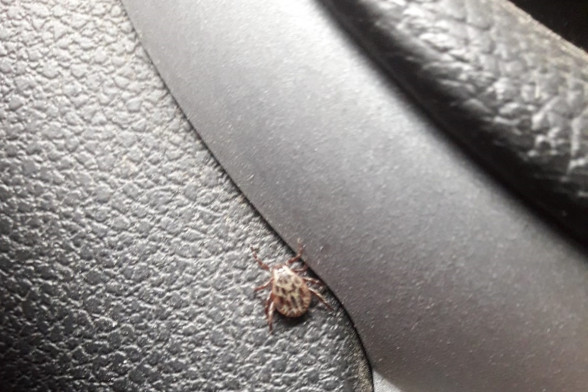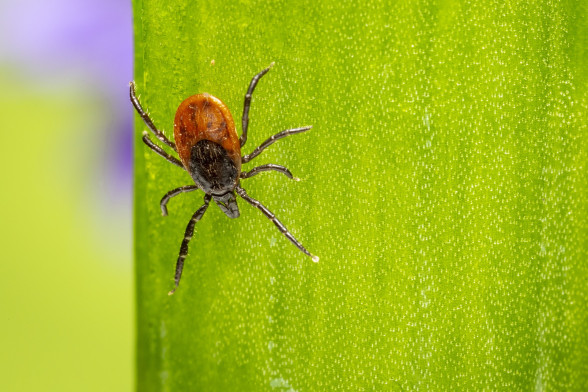
Ticks /Ixodoidea/
How do they look?
Ticks belong to the order of mites and are part of the Ixodoidea family. They have an oval shape, with adult individuals being around 1-4 mm in size and engorged with blood reaching about 1 cm. They have a characteristic chitinous shield on their back. In males, this shield covers the entire body, giving them a dark appearance, while in females, it only covers the front part, leaving the back part reddish.
Where do they live?
They inhabit wooded and bushy areas but can also be found in home gardens and city parks. Unlike some ticks, they do not live in hiding but prefer open spaces, making them more easily accessible to prey.
What do they eat?
In Latvia's climate, horseflies are typically found in dry areas, such as tall grass or low bushes, stretching their front legs forward, waiting for a suitable host. If they fail to find one, the horsefly perishes, as it relies solely on blood for sustenance. They feed on the blood of various animals, and some species also feed on human blood. The blood-sucking process lasts 2-6 days, during which the horsefly noticeably increases in size.
Interesting and important facts
Ticks carry dangerous diseases, including tick-borne encephalitis, Lyme disease, bovine spongiform encephalopathy, and others. Their activity season in Latvia typically lasts from the beginning of April to the end of October, but in favorable meteorological conditions, it can be longer. Ticks become active when the snow melts, and the air temperature exceeds +3-5°C.
If a tick has bitten, it should not be squeezed, cut, burned, or attempted to be pulled out with fingers, as the tick's body contents can enter the bite site. One month after a tick bite, it is advisable to strengthen the immune system by taking more vitamins, especially vitamin C, or consuming fruits/berries rich in it, drinking plenty of fluids, avoiding stress, lack of sleep, colds, alcohol consumption, and intense physical exertion.
Information sources: https://www.latvijasdaba.lv, Wikipedia, the website of the Center for Disease Prevention and Control www.spkc.gov.lv
Photo: pixabay.com

